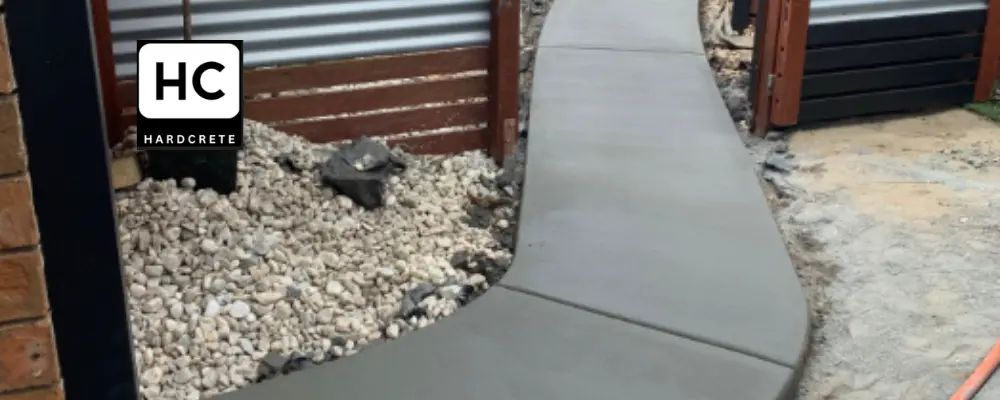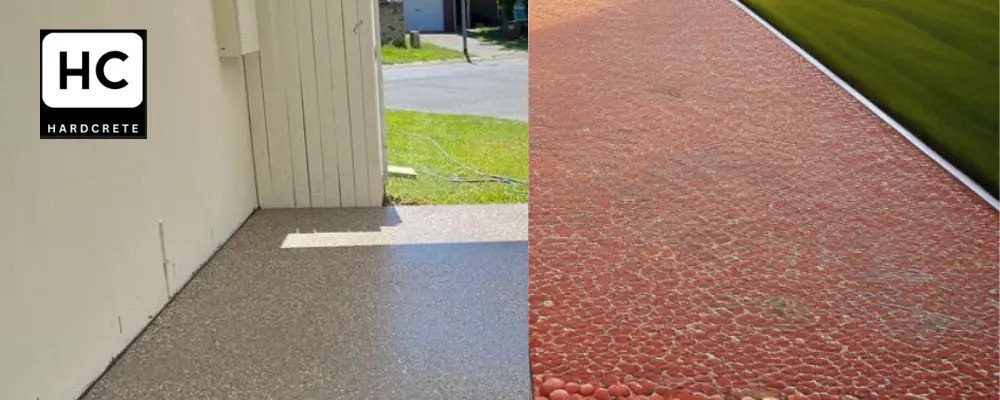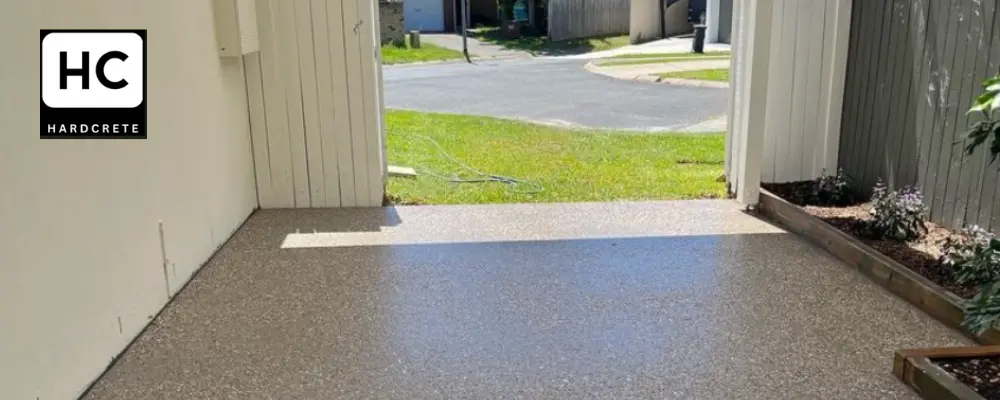Concrete is the most widely used building material in the construction industry. Its versatility, durability, and strength make it the preferred choice for a variety of applications, from roads and bridges to buildings and foundations. But what makes concrete so strong and durable? The answer lies in its mix design.
Understanding Concrete Mix Design
The intricacies of concrete mix design involve a comprehensive understanding of the materials used, including fly ash and portland cement. This process plays a vital role in determining the minimum compressive strength and the amount of fine aggregate required. Additionally, it involves careful consideration of the volume of coarse aggregate and the portion of the cement to achieve the desired results in construction projects. Ultimately, the mix design must incorporate building materials, ready mix, and reinforcing steel to ensure structural integrity and longevity.

The Concept of Concrete Mix Design
Achieving the desired properties of concrete in a cost-effective and sustainable manner is the fundamental goal of concrete mix design. It involves a methodical approach to proportioning concrete components based on the intended performance, taking into account the attributes of cement, aggregates, water, and admixtures. This scientific process balances the engineering properties of concrete with the practical aspects of construction, aiming to optimize mix proportions for the desired strength, workability, and durability of the concrete, thereby enhancing its overall performance and sustainability.
Importance of Concrete Mix Design in Construction
In construction, proper concrete mix design is essential for achieving the desired strength and durability of structures. It enables the attainment of specific concrete properties while minimizing the use of materials like cement. By ensuring the required workability, strength, and durability, mix design mitigates the risk of construction defects. Tailoring concrete properties through mix design meets project requirements, enhancing the performance and longevity of structures to elevate overall construction quality.
Key Factors Influencing Concrete Mix Design
Key Factors Influencing Concrete Mix Design:
When determining a concrete mix design, it is crucial to consider the role of the water-cement ratio, the significance of aggregate size, and the influence of environmental conditions. The water-cement ratio directly impacts the strength and durability of the concrete, while the aggregate size affects the workability and strength. Additionally, environmental conditions such as temperature and humidity can impact the setting time and overall performance of the concrete mix. Careful consideration of these key factors is essential in producing a well-balanced and high-quality concrete mix.
Role of Water-Cement Ratio
In the production of concrete, the water-cement ratio plays a pivotal role in determining its strength and durability. Achieving the perfect balance in this ratio is crucial for obtaining the desired workability and robustness of the concrete structure. Additionally, controlling the water-cement ratio is vital in preventing segregation, bleeding, and excessive shrinkage, thus ensuring the quality of the construction material. This ratio significantly impacts the hydration process of cement, directly influencing the properties and overall performance of the concrete. Therefore, adjusting the water-cement ratio correctly is fundamental in optimizing the mix design to achieve the desired concrete properties.
Importance of Aggregate Size
The size and gradation of aggregates have a significant impact on the workability, strength, and economy of the concrete mix. Proper aggregate size distribution is crucial for achieving the desired concrete properties and reducing the cement content. Effective mix design considers the optimal combination of coarse and fine aggregates to achieve the desired concrete properties. Aggregates of appropriate size contribute to the internal strength and durability of the concrete mixture. Selecting the right aggregate size is essential for achieving the desired concrete workability and strength.
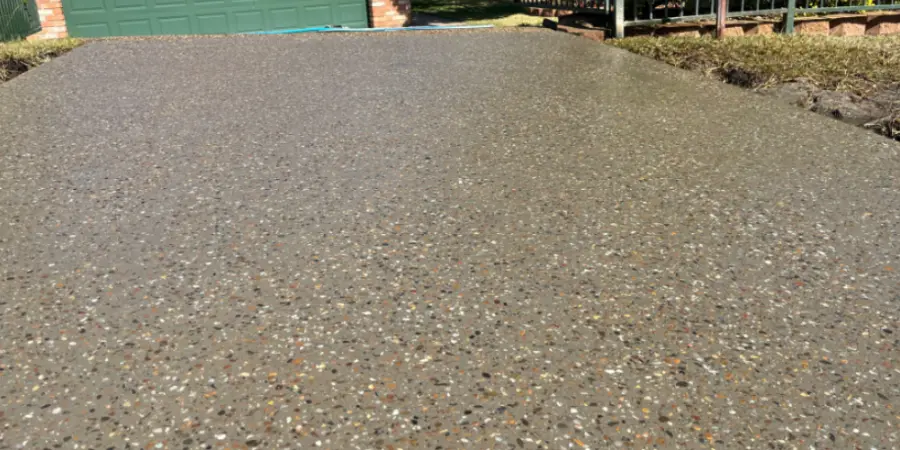
Influence of Environmental Conditions
Environmental factors, including temperature, humidity, and exposure, impact the concrete’s curing, setting, and durability. A proper mix design considers these factors to ensure the concrete can endure the expected conditions. These influences significantly determine the concrete mix proportions and admixture requirements. Adapting the mix design to environmental conditions is critical for achieving the desired concrete performance and longevity, producing durable and sustainable concrete structures. This adaptability is essential for the concrete to withstand varying environmental conditions and remain structurally sound.
Different Types of Concrete Mix Design
Standard, Design, and Nominal are the three main types of concrete mix design. Standard mix designs are widely used and established by specifications. Ready mix concrete companies frequently use design mix for high-performance and specialty concrete. Nominal mix design offers simplicity and uses guidelines for minimum compressive strength instead of extensive testing. It’s crucial to consider various building materials, like fly ash and portland cement, when selecting the appropriate mix design. The amount of fine aggregate and the volume of coarse aggregate also play key roles in mix design, alongside the portion of the cement and reinforcing steel.
Standard Concrete Mix Design
Following established industry standards and specifications for common construction applications, standard concrete mix design ensures consistency and predictability. It uses prescribed mix proportions to achieve desired concrete properties, adhering to industry standards. Widely used in construction, this approach provides reliable concrete properties for a range of projects. Understanding its principles and limitations is crucial for ensuring quality and performance. Utilizing fly ash and portland cement, the mix considers the minimum compressive strength and the portion of the cement for optimal results.
Design Concrete Mix Design
Determining the concrete’s required strength is the initial step. Next, selecting the type and size of aggregate is crucial. Then, choosing the appropriate water-to-cement ratio is essential for the mix. Additionally, deciding on the type of cement and any supplementary admixtures is important. Environmental factors and curing requirements should also influence mix adjustments. Finally, conducting a trial batch to test the compressive strength ensures the mix meets the desired specifications.
Nominal Concrete Mix Design
When considering the nominal concrete mix design, it’s important to note that the mix proportions are based on the volume of cement, water, and aggregates without specific test results. This method is particularly suitable for small construction projects with standard concrete properties, as it involves proportioning or approximating the concrete mixture design. Mainly used in the construction industry for non-structural concrete applications, nominal mix proportions vary according to the desired strength of the concrete. This approach plays a significant role in ensuring the efficiency and reliability of building materials, especially for projects requiring a standard concrete mix.
Methods for Concrete Mix Design
Methods for concrete mix design involve several approaches to determine the optimal composition. The use of fly ash, ready mix, and Portland cement are common methods to enhance the performance of the mix. The calculations incorporate minimum compressive strength, the amount of fine aggregate, and the volume of coarse aggregate. Additionally, consideration is given to the portion of the cement, reinforcing steel, and building materials. The process aims at achieving the required properties while respecting the reading time to ensure proper setting.
Indian Standard Method of Concrete Mix Design
The method defined by the Indian Standard utilizes the specific gravities of building materials, water content, and Portland cement to proportion the mix. By controlling these elements, the goal is to attain the required strength of concrete. This systematic approach involves calculating the mix design proportions based on the desired grade of concrete. Additionally, it accounts for factors such as the minimum compressive strength, volume of coarse aggregate, and exposure conditions, optimizing the mix for various construction needs.
American Concrete Institute (ACI) Committee Method of Concrete Mix Design
Emphasizing the robustness and endurance of concrete mixes, the ACI Committee method incorporates specific gravity, slump value, and air content for proportioning. It utilizes test results, standard deviation, and compressive strength requirements. The ACI method also considers aggregate size, water reducer, and chemical admixtures for mix proportioning, providing guidelines for constructing durable, high-strength concrete based on specific project requirements. This approach ensures the creation of concrete mixes that meet the minimum compressive strength and durability standards, utilizing building materials efficiently.
British DOE Method of Concrete Mix Design
The approach outlined by the British Department of the Environment (DOE) for concrete mix design emphasizes the correlation between concrete and cement content in mix proportioning. It takes into account the minimum cement content, slump flow, and the portion of cementing materials for mix design to create durable concrete with the desired strength and workability. Additionally, this method incorporates internal pressure, entrapped air, and water reducer to systematically proportion concrete mixes while considering the desired concrete properties.
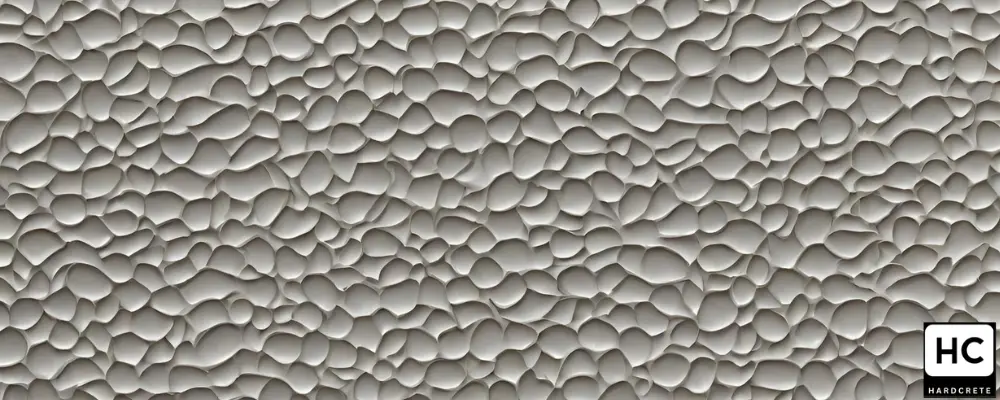
The Process of Concrete Mix Design
Target Strength Calculation involves determining the minimum compressive strength required for the concrete. The Water-Cement Ratio Selection is crucial to achieve the desired properties of the concrete mix. Meanwhile, the Water Content Selection focuses on maintaining workability and strength. Cement Content Calculation plays a pivotal role in ensuring the durability and strength of the concrete. Lastly, the Aggregate Volume Preparation determines the volume of coarse and fine aggregates needed for the mix. This process integrates various factors to create a durable and high-quality concrete mix design.
Target Strength Calculation
Determining the desired compressive strength is a critical part of the concrete mix design process. This calculation takes into account the exposure condition, grade of concrete, and specific design parameters, ensuring the mix achieves the specified strength for its intended application. Accuracy in target strength calculation significantly influences the durability and performance of the concrete mix, making it vital for construction projects. It plays an essential role in ensuring the concrete meets the minimum compressive strength required and is suitable for its intended purpose.
Water-Cement Ratio Selection
Selecting the water-cement ratio is a crucial factor in concrete mix design, directly impacting strength, workability, and durability. This decision considers compressive strength, exposure conditions, and mix design requirements, all contributing to the desired concrete properties and performance. The right water-cement ratio selection significantly enhances the overall quality and durability of the concrete mix.
Water Content Selection
Balancing water content in the concrete mix design process is crucial for achieving the desired workability and strength. The selection of water content impacts the durability and performance of the concrete mix, considering specific construction project requirements and mix design parameters. It plays a vital role in ensuring that the concrete mix meets the specified design criteria, with careful consideration of NLP terms such as fly ash, portland cement, and minimum compressive strength. Achieving the right water content contributes to the overall quality of the building materials and the ready mix, aligning with the professional standards of the construction industry.
Cement Content Calculation
Determining the required cement content is integral to the concrete mix design process, directly impacting its compressive strength and overall performance. The calculation involves evaluating mix proportions, the water-cement ratio, and specific design requirements to achieve the desired strength and durability. This precise calculation is essential for producing high-quality and durable concrete, influencing workability and long-term performance. It’s crucial to consider building materials, fly ash, ready mix, portland cement, and reinforcing steel when determining the portion of the cement in the mix to meet the minimum compressive strength and enhance the volume of coarse and fine aggregate.
Aggregate Volume Preparation
Preparing the aggregate volume involves determining the required volume of fine and coarse aggregate, calculating their specific gravity, and then preparing the volume based on the mix design requirements. It is crucial to ensure that the aggregate volume meets the desired concrete properties and to test it for suitability in the mix design. Attention to these details is vital in achieving the minimum compressive strength and other essential properties of the concrete. Additionally, the aggregate volume plays a significant role in the overall quality and performance of the concrete, making it a critical factor in construction projects.
Practical Aspects of Concrete Mix Design
Preparing trial mixes involves testing different proportions of materials to determine the optimal combination for the desired concrete properties. Concrete mix design calculations are essential for ensuring the right balance of ingredients, including fly ash and Portland cement, to meet the minimum compressive strength requirements. Mix proportion determination considers the amount of fine aggregate and volume of coarse aggregate needed to achieve the desired results. Additionally, considering additional building materials like ready mix and reinforcing steel can further enhance the concrete mix design.
Preparing Trial Mixes
Conducting trial mixes provides an assessment of concrete properties, allowing for adjustments to the mix design based on test results. It’s crucial to evaluate the slump value of trial mixes for workability and document specific mix proportions used. Additionally, analyzing the air content of trial mixes is essential for ensuring durability.
Concrete Mix Design Calculations
To achieve the desired strength, perform calculations for the concrete mix. Determine the required minimum cement content, calculate the standard deviation for test results, and evaluate the maximum aggregate size for mix calculations. Adjust the mix proportioning based on exposure conditions to optimize the design. These calculations are crucial for ensuring the quality and durability of the concrete mix in construction projects.
Mix Proportion Determination
Determining mix proportions is crucial for achieving the required grade of concrete. Calculating these proportions aims to achieve the desired compressive strength and durable concrete surfaces. Adjusting the mix design according to the desired strength is essential. Verifying the mix proportions ensures the specific volume of concrete needed is met. It also involves assessing the mix proportioning for durable concrete surfaces, which is vital for long-lasting building materials.

Special Considerations in Concrete Mix Design
Special Considerations in Concrete Mix Design involve incorporating fly ash and ready mix to enhance the properties of the mix. The careful selection of building materials like portland cement and reinforcing steel also plays a crucial role. Additionally, adjusting the portion of the cement, minimum compressive strength, and the amount of fine aggregate are critical factors. Furthermore, accounting for the volume of coarse aggregate, the influence of environmental conditions, and reading time for the mix preparation are significant considerations.
Adjusting for Moisture in Aggregates
To accommodate the moisture content in aggregates, it’s crucial to adjust the mix design accordingly. Calculating the water content adjustment based on aggregate moisture is essential to ensure the concrete mix compensates for it. Assessing the impact of moisture on mix proportioning calculations is a critical step in this process. Additionally, adjusting the water-cement ratio to accommodate aggregate moisture is necessary to maintain the quality and strength of the concrete.
Role of Air Content in the Mix
Evaluating the air content required for durable concrete mix designs is crucial for ensuring the longevity and strength of the construction. Assessing the impact of air entrainment on the concrete properties helps in understanding its behavior under different conditions. It is essential to determine the appropriate air content tailored to the specific concrete mix design and adjust the mix design accordingly to achieve the desired air content. Verifying the mix design’s ability to produce durable concrete surfaces is a key step in the process, ensuring the structural integrity of the building materials.
Frequently Asked Questions
How to Calculate the Volume of a Cement Bag?
A cement bag typically has a volume of 0.0347 cubic meters (m³). To find the volume, multiply the weight of the bag in kilograms by 0.0347. For example, a 50 kg cement bag would have a volume of 1.735 m³ (50 x 0.0347). This calculation helps determine the number of bags needed for a project.
What Factors Affect the Strength of a Concrete Mix?
Factors that influence the strength of a concrete mix include the water-to-cement ratio, type and amount of cement, aggregate, admixtures used, mixing time and temperature, and proper curing techniques. These factors play a crucial role in determining the final strength of the concrete.
What is a 1 2 3 mix for concrete?
A 1 2 3 mix for concrete refers to the ratio of ingredients used in the mixture. This mix involves using one part cement, two parts sand, and three parts gravel or crushed stone. It is commonly used for small DIY projects like sidewalks or stepping stones, but it’s essential to calculate the precise amount of each ingredient needed based on the project’s size before mixing.
What is the design mix ratio for concrete?
The design mix ratio for concrete varies based on its intended use and required strength. Typically, a mix ratio of 1:2:3 (cement, sand, coarse aggregates) is used for normal strength concrete. For higher strength, the mix may be adjusted with more cement or additives to achieve the desired results. Follow recommended ratios for optimal strength and durability.
Conclusion
In conclusion, concrete mix design plays a crucial role in the construction industry. It ensures the strength, durability, and quality of the concrete used in various projects. By considering factors such as water-cement ratio, aggregate size, and environmental conditions, engineers can create a concrete mix that meets the specific requirements of each project. There are different types of concrete mix designs, and the selection depends on the project’s needs and specifications. The process of concrete mix design involves target strength calculation, water-cement ratio selection, and aggregate volume preparation. It is essential to perform trial mixes and make necessary adjustments to achieve the desired results. Special considerations like moisture in aggregates and air content also need to be taken into account. By following a step-by-step guide and considering these factors, engineers can ensure the success of their concrete projects.

